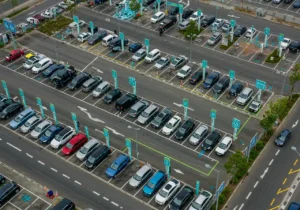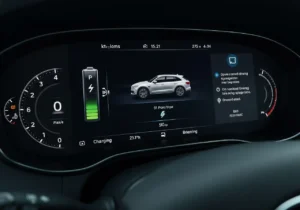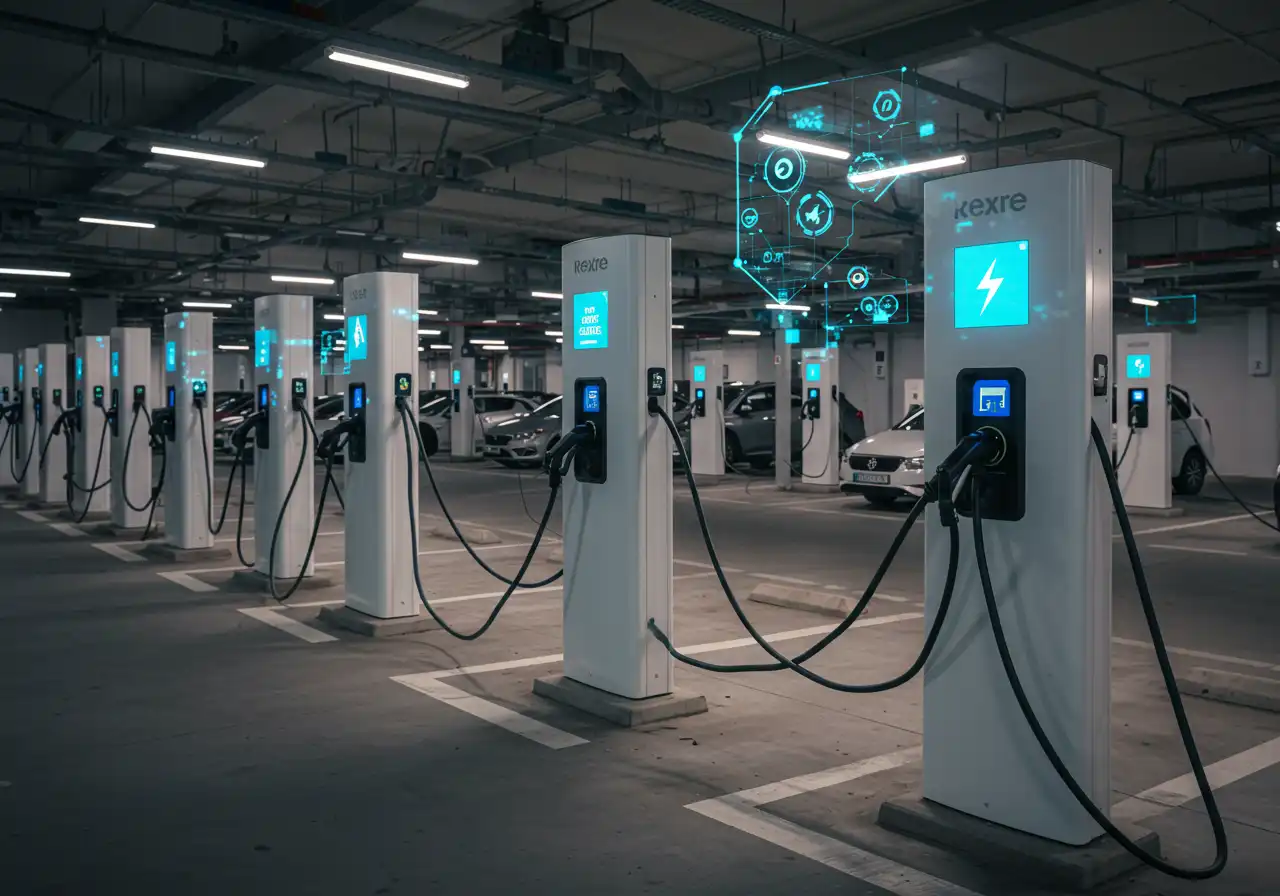The global car rental industry is shifting rapidly toward electric vehicles (EVs). With growing sustainability goals and consumer demand for eco-friendly options, rental companies are racing to expand their EV fleets. But operating electric vehicles brings new challenges—particularly when it comes to EV fleet charging optimization and maintenance management.
In 2025 and beyond, the rental companies that master efficient charging schedules, battery care, and predictive maintenance will lead the industry. Here’s how to stay ahead of the curve.
The Rapid Rise of EV Rentals
 Electric vehicles are no longer niche products—they’re mainstream. Leading automakers are releasing new models with greater range, faster charging, and lower maintenance needs. For rental car companies, offering EVs is both a business necessity and a competitive advantage. According to IEA’s Global EV Outlook, electric car sales grew by over 35% in 2024 and are expected to surpass 25 million worldwide by 2025.
Electric vehicles are no longer niche products—they’re mainstream. Leading automakers are releasing new models with greater range, faster charging, and lower maintenance needs. For rental car companies, offering EVs is both a business necessity and a competitive advantage. According to IEA’s Global EV Outlook, electric car sales grew by over 35% in 2024 and are expected to surpass 25 million worldwide by 2025.
However, adding EVs to a fleet introduces new operational complexities. Traditional gas fleets rely on refueling convenience and standardized maintenance intervals. EV fleets, on the other hand, depend on smart charging schedules, battery health monitoring, and energy management—factors that directly affect profitability and uptime.
The Challenges of Managing EV Fleets
Transitioning to EVs isn’t as simple as replacing gas cars with electric models. Fleet managers must rethink how they allocate vehicles, schedule charging, and maintain equipment. The most common challenges include:
- Limited Charging Infrastructure: Many rental hubs still lack the number or type of chargers needed to handle an expanding EV fleet.
- Charging Downtime: EVs spend time idle while charging, which can reduce fleet availability and utilization rates.
- High Energy Costs: Charging during peak electricity hours can drastically increase operational expenses.
- Battery Degradation: Frequent fast charging and deep discharge cycles can shorten battery life, increasing long-term costs.
- Complex Scheduling: Coordinating which cars to charge, when, and where requires sophisticated data tracking and automation.
Why EV Fleet Charging Optimization Matters
Optimizing charging is about more than convenience—it’s about maximizing profits and vehicle lifespan. A poorly managed charging schedule can lead to higher costs, wasted energy, and faster battery wear. With predictive analytics and smart scheduling, companies can:
- Lower electricity bills by charging during off-peak hours.
- Reduce the strain on local power grids and internal infrastructure.
- Extend battery life through balanced state-of-charge management.
- Ensure vehicles are fully ready when customers need them most.
For example, imagine you manage 100 EVs across multiple branches. Without optimization, 30 vehicles might charge simultaneously at 5 p.m.—when electricity prices spike. But with smart software, you could stagger those sessions overnight, cutting energy costs by up to 40% and maintaining battery health.
Technology Solutions for Smarter Fleet Charging
 Today’s fleet management tools are evolving rapidly to meet the needs of electric rentals. The most effective solutions combine IoT devices, cloud software, and machine learning algorithms to create dynamic charging strategies. Some key innovations include:
Today’s fleet management tools are evolving rapidly to meet the needs of electric rentals. The most effective solutions combine IoT devices, cloud software, and machine learning algorithms to create dynamic charging strategies. Some key innovations include:
- Load Balancing Systems: Automatically distribute power across multiple charging stations to prevent overloads and minimize utility costs.
- Predictive Algorithms: Analyze usage patterns to anticipate when vehicles will be needed, scheduling charging sessions accordingly.
- Vehicle-to-Grid (V2G) Integration: Enables fleets to send unused energy back to the grid during high-demand periods, potentially generating revenue.
- Battery Health Monitoring: Uses real-time data to detect early signs of degradation, preventing costly replacements.
- Smart Charging Platforms: Tools like ChargePoint and EV Connect offer APIs for rental companies to monitor and control charging remotely.
According to a 2025 study on EV fleet optimization, machine learning-based scheduling can reduce electricity costs by 25–30% while increasing fleet uptime. Integrating these systems into rental operations gives companies actionable insights to improve efficiency and sustainability.
Maintenance Optimization for EV Fleets
While EVs have fewer moving parts than combustion vehicles, maintenance remains critical. Battery management, tire wear, and electrical system upkeep require regular monitoring. Here’s how to stay proactive:
- Monitor battery temperature and charge cycles: Excessive heat or repeated full charges can accelerate wear.
- Use telematics data: Collect insights from onboard sensors to predict maintenance needs before failures occur.
- Train technicians: Ensure staff understand high-voltage systems, software updates, and EV-specific diagnostics.
- Schedule periodic software updates: EVs receive over-the-air updates that improve performance and safety—don’t skip them.
Routine diagnostics and condition monitoring can extend EV lifespan significantly. By tracking metrics such as state of health (SoH) and state of charge (SoC), rental operators can forecast when batteries will need servicing or replacement—helping to avoid unexpected downtime.
How to Implement an Optimization Strategy
Ready to bring optimization to your EV rental operations? Start with these steps:
- Audit your infrastructure: Assess the number of chargers, power capacity, and vehicle usage rates.
- Adopt a fleet management platform: Choose a system capable of integrating EV data and controlling charging behavior.
- Establish charging zones: Designate stations for quick top-ups and overnight full charges.
- Train your team: Equip employees with the knowledge to monitor and maintain EV systems efficiently.
- Leverage analytics: Use data visualization to identify underperforming vehicles and optimize scheduling.
Optimization isn’t just about software—it’s about a mindset shift toward efficiency, sustainability, and long-term planning.
The Benefits of Getting It Right
Rental car companies that embrace EV optimization enjoy measurable advantages:
- Lower operational costs through intelligent energy use.
- Higher fleet uptime by preventing unnecessary downtime.
- Better customer satisfaction thanks to consistently charged and reliable vehicles.
- Improved brand image as a sustainability leader in the rental industry.
As travelers increasingly prioritize eco-conscious choices, EV optimization is not just an efficiency tactic—it’s a branding opportunity that aligns with consumer expectations.
Conclusion
The EV transition isn’t a future trend—it’s happening now. By investing in EV fleet charging optimization and predictive maintenance tools, rental car companies can stay ahead of regulatory changes, attract environmentally minded customers, and improve profitability. In 2025 and beyond, efficiency and sustainability will go hand in hand.




